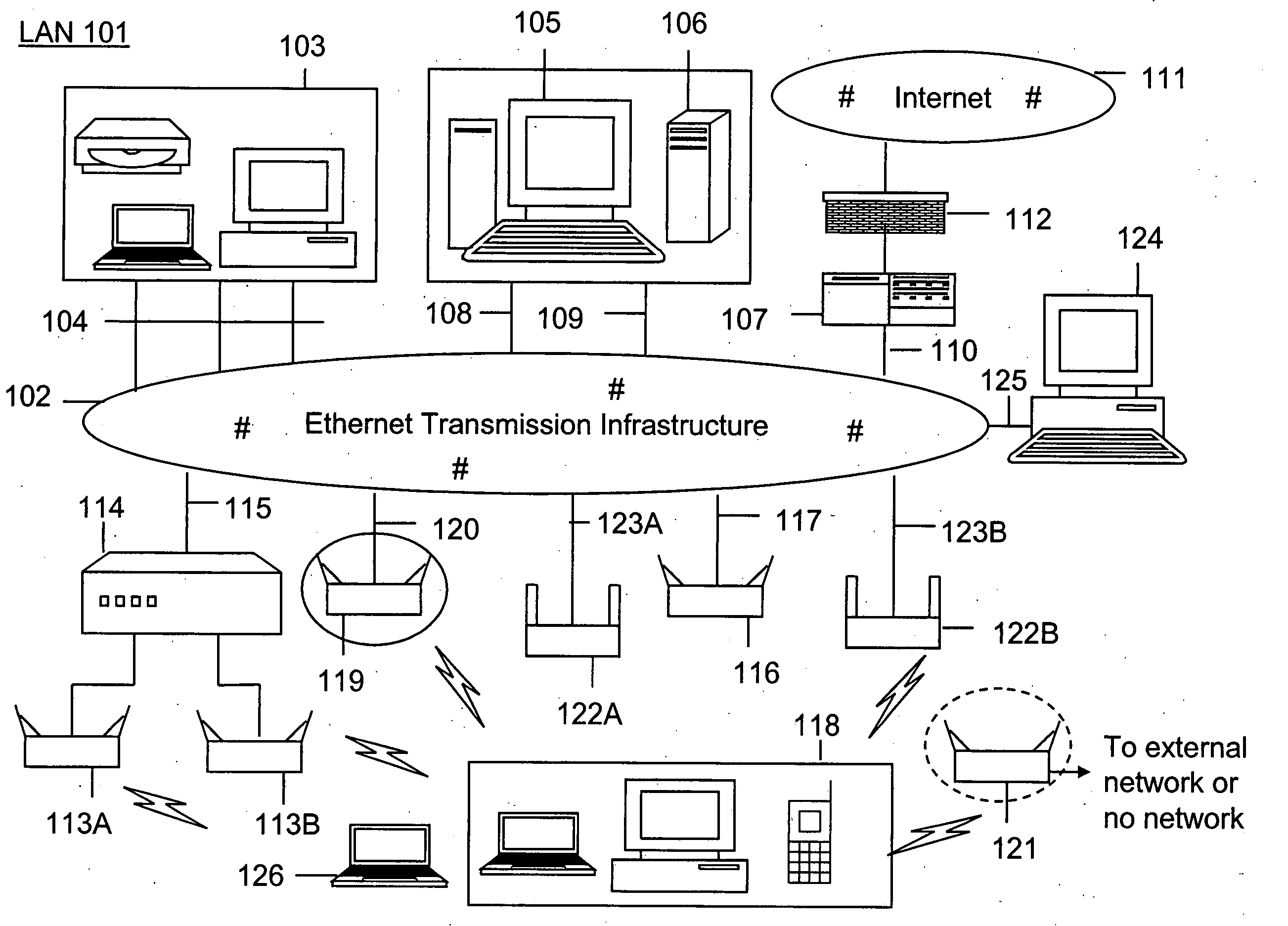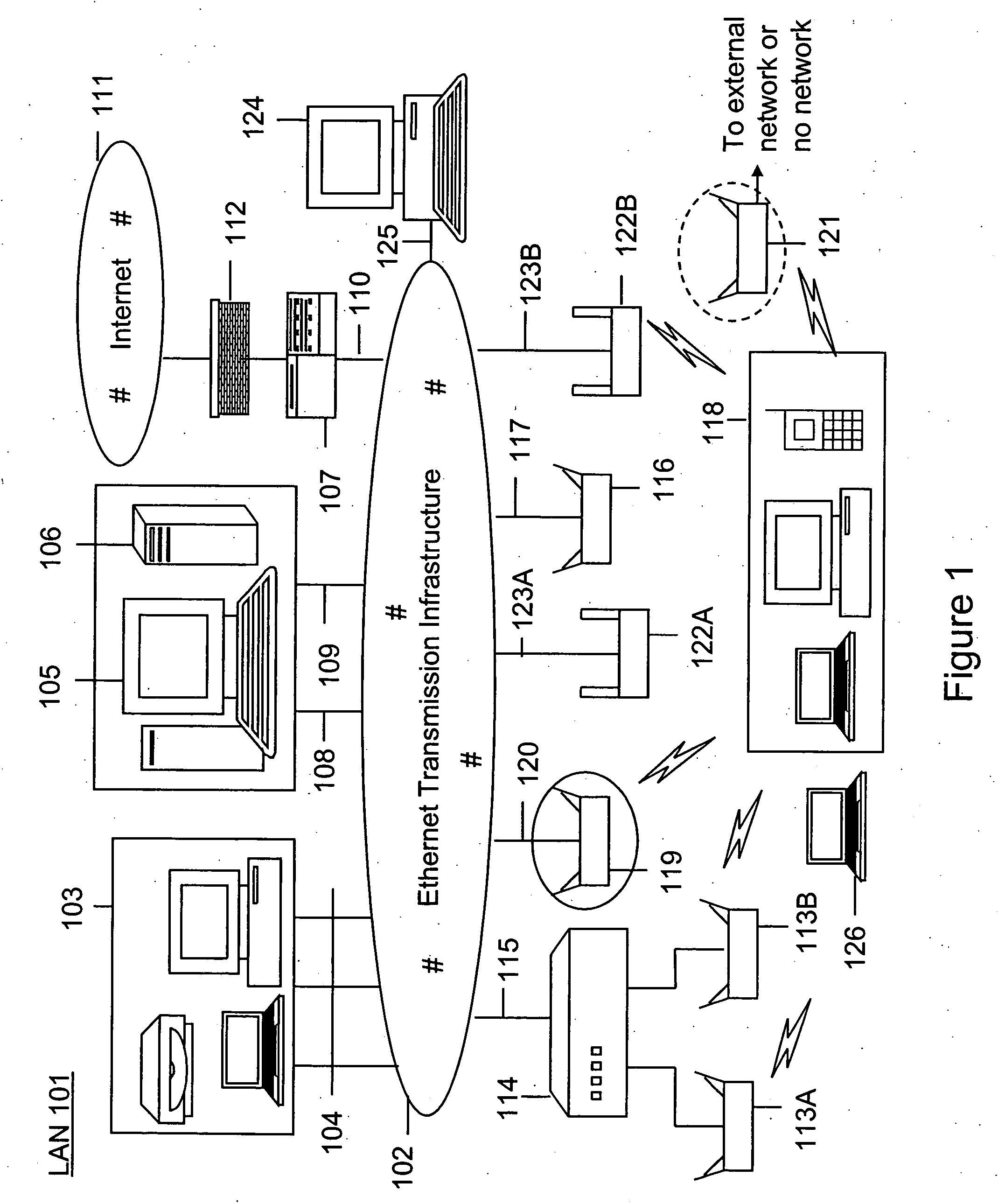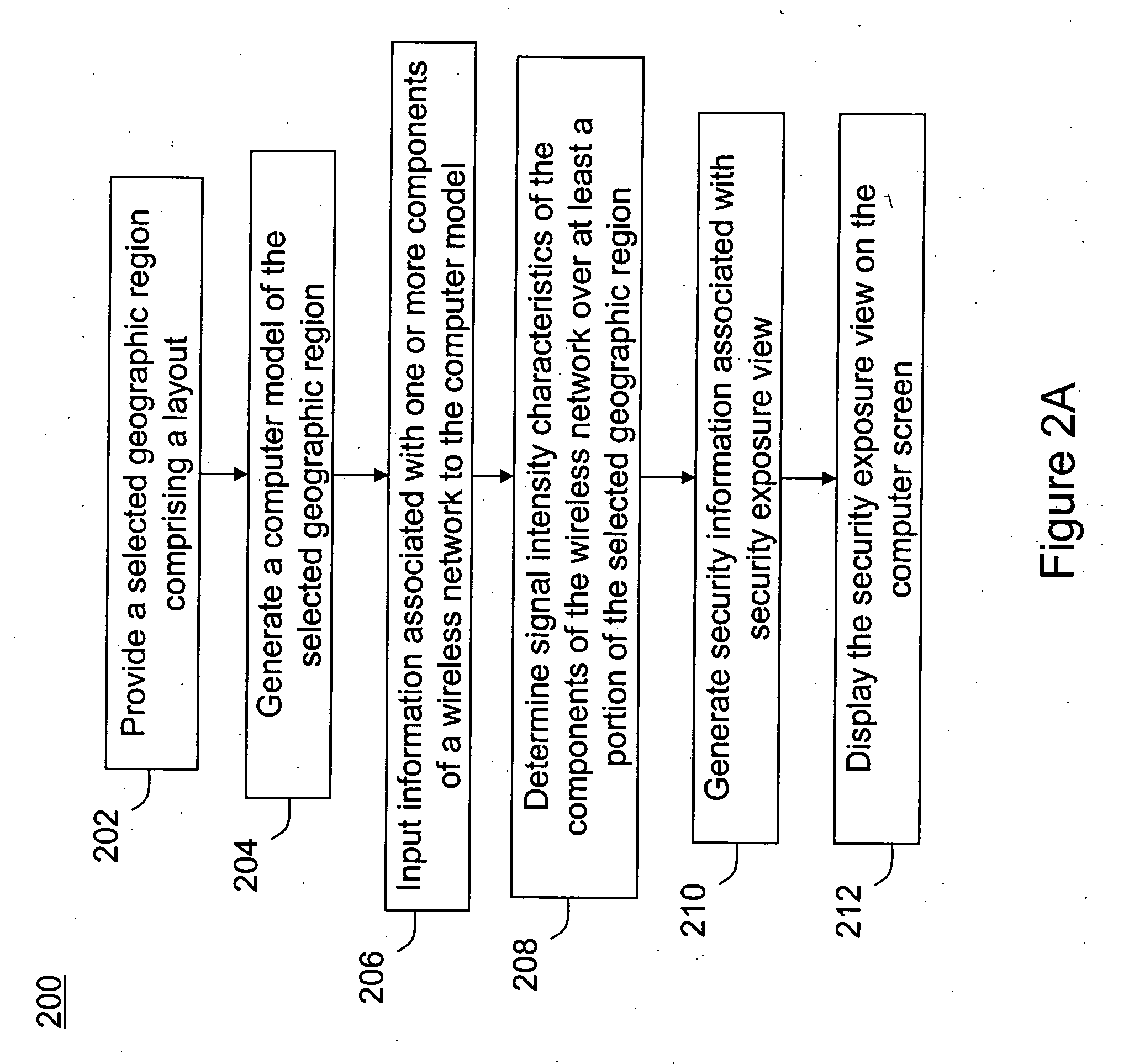Method for wireless network security exposure visualization and scenario analysis
a wireless network and scenario analysis technology, applied in the field of wireless computer networking techniques, can solve the problems of wireless networks being easily vulnerable to unauthorized intruders, unable to contain radio waves in physical space, and certain limitations of wifi, so as to facilitate security exposure analysis of wireless networks, reduce the risk of security attacks, and be easy to read
- Summary
- Abstract
- Description
- Claims
- Application Information
AI Technical Summary
Benefits of technology
Problems solved by technology
Method used
Image
Examples
Embodiment Construction
[0038] The present invention provides a method and a system to enhance security of the wireless local area network environments. Merely by way of example, the invention has been applied to a computer networking environment based upon the IEEE 802.11 family of standards, commonly called “WiFi.” But it would be recognized that the invention has a much broader range of applicability. For example, the invention can be applied to Ultra Wide Band (“UWB”), IEEE 802.16 commonly known as “WiMAX”, Bluetooth, and others.
[0039] Wireless local area networks are vulnerable to security breaches resulting from intrusion, denial of service and other types of attacks inflicted by unauthorized wireless devices. Analyzing the security exposure of wireless network thus becomes a critical aspect for network deployment. Additionally, providing visual representation of the security exposure is essential. Accordingly, the present invention provides techniques for generating and displaying the security expo...
PUM
 Login to View More
Login to View More Abstract
Description
Claims
Application Information
 Login to View More
Login to View More - R&D
- Intellectual Property
- Life Sciences
- Materials
- Tech Scout
- Unparalleled Data Quality
- Higher Quality Content
- 60% Fewer Hallucinations
Browse by: Latest US Patents, China's latest patents, Technical Efficacy Thesaurus, Application Domain, Technology Topic, Popular Technical Reports.
© 2025 PatSnap. All rights reserved.Legal|Privacy policy|Modern Slavery Act Transparency Statement|Sitemap|About US| Contact US: help@patsnap.com



